
Prague is probably the city in the world that most skilfully blends different architectural styles. Gothic, Baroque, Art Nouveau, Cubism, but also the more atypical Functionalism and Brutalism! Brutalism is not the architectural style spontaneously associated with Prague, but I really like it. Just like the American actor Adrien Brody, who won an Oscar in 2025 for the film The Brutalist, and who has long admired mid-century concrete structures. He is said to have discovered this architecture during his many film shoots in the Czech Republic (info here). Keep your eyes peeled during your stay in Prague!
Brutalist or post-modernist architecture has few frills
The word “brutalism” comes from the French word for raw concrete, as appreciated by the architect Le Corbusier. With brutalism, there’s littleor no ornamentation, just geometric forms. Massive, angular and repetitive. Raw, unpretentious architecture. There is no exact definition of Brutalism, so it’s debatable what is Brutalist and what is not. Disliked or appreciated, increasingly preserved and valorized, Brutalist architecture is part of Prague’s décor and heritage. It is even referred to as “Czech Brutalism”. First appearing in the 50s, Brutalism flourished from the mid-60s to the late 80s. It is therefore associated with the Communist regime. While statues and other Soviet symbols are gradually disappearing, Brutalist buildings (despite some destruction in recent years) are managing to survive.
Brutalism in Prague, an architecture now protected. A few examples:
Žižkov’s television tower
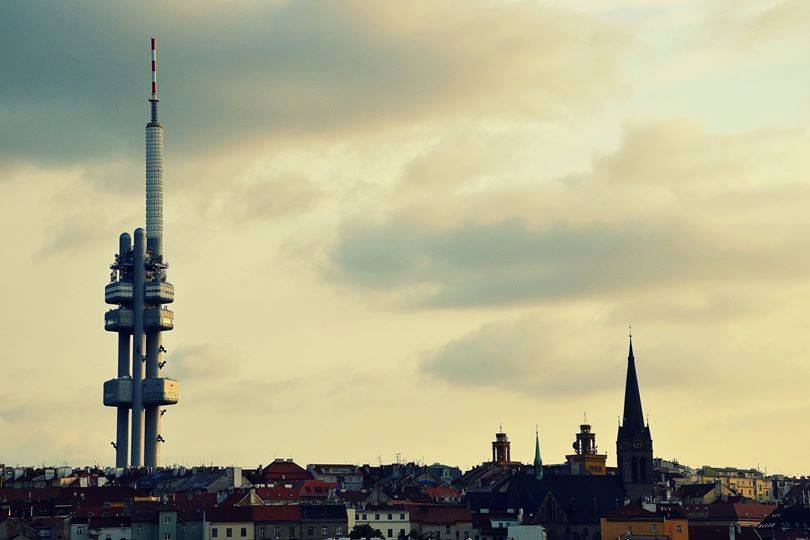
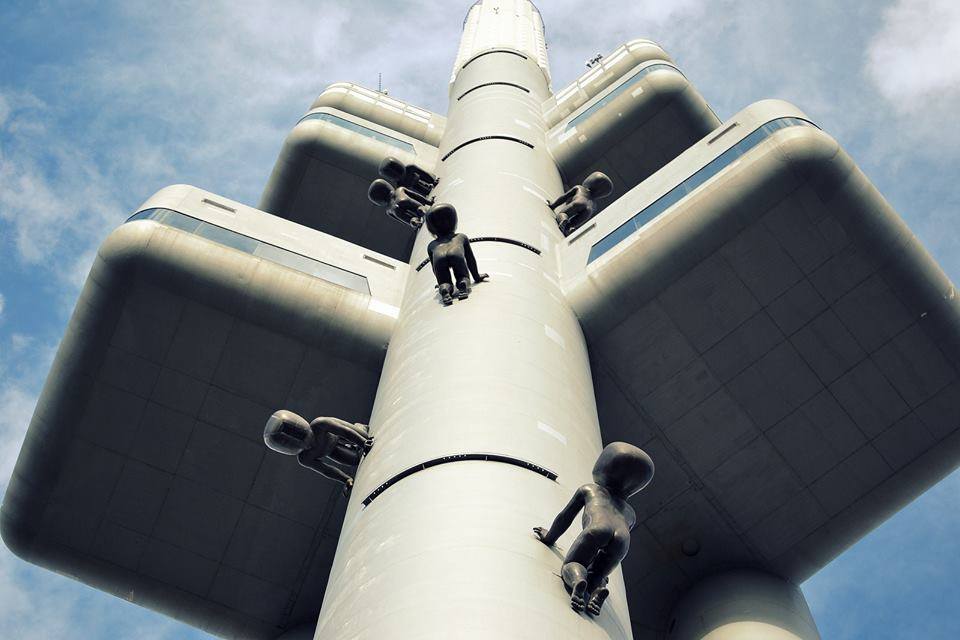
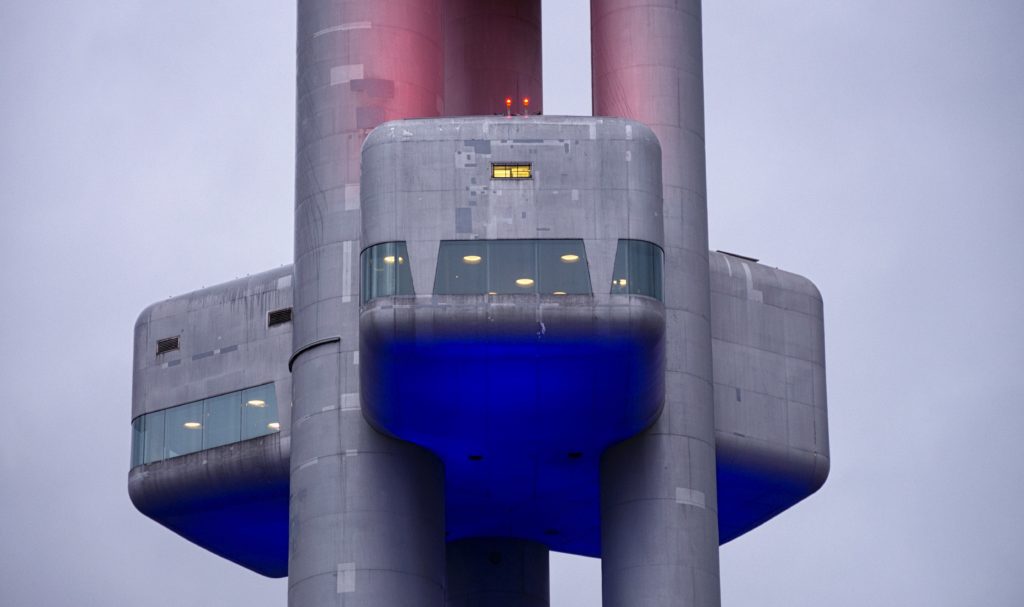
Brutalist or not? That’s a matter of debate. What is certain is that it is Prague’s tallest monument (216 meters) and can be visited (info here). It’s also one of Europe’s most impressive modern constructions. It was designed by architect Václav Aulický. Built between 1985 and 1992, like a rocket ready to take off, it was erected by the Czechoslovak communist regime in the Žižkov district. It is sometimes associated with the most hideous buildings in the world. You be the judge. As a Praguan, I like it. You can even buy a nice souvenir T-shirt, as it has become emblematic of Prague (just like the Charles Bridge).
Žižkov Tower is Prague’s tallest monument
The tower is an excellent landmark in Prague. The 10 giant babies by artist David Černý that have been climbing it since 2000 have also won the hearts of Prague residents and tourists alike (in 2024, the same artist installed giant butterfly planes right in the city center on the facade of the Maj department store, also more or less of Brutalist architecture). You can climb the TV tower for an exceptional view of Prague (free cafe-restaurant on the 1st floor at 66 meters and observation platform at 93 meters). You can even book a room at the One Room Hotel, the only room in the tower and perhaps the most unusual in Prague, at 70 meters high! Finally, you can play mini golf at the foot of the tower (ask at the Miminoo restaurant), which is great fun for children, who can also enjoy the small ice rink in winter.
Žižkov TV Tower – Tower Park Praha
Mahlerovy sady 1
Daily 9am-0am
The new National Museum building
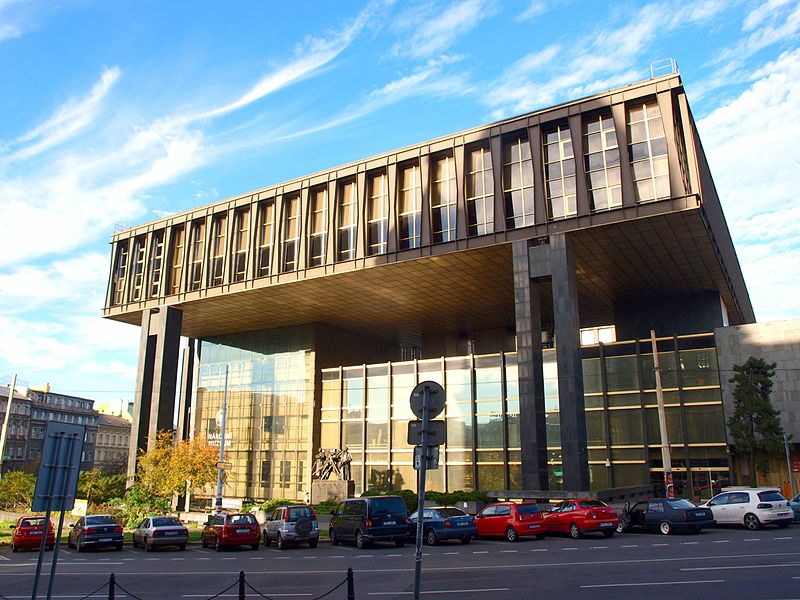
Located at the top of Wenceslas Square, the building once housed the Stock Exchange, the national parliament from 1946 and, after the Velvet Revolution, between 1994 and 2002, the headquarters of Radio Free Europe. Classified in 2000, it is now an annex of the National Museum on its right. This Brutalist superstructure was built in 1973 for the Czechoslovak Federal Assembly, and rests on four pillars (look out for Shirley Bassey singing “Goldfinger” on the building site in the late 60s!) You’ll find beautiful wooden ceilings and an incredible view of Wenceslas Square. Many of the world’s leading political figures of the time spoke here, including Mikhail Gorbachev, François Mitterrand and Margaret Thatcher. Not far away, the Hotel Jalta bunker was ready to house Communist dignitaries in the event of a nuclear attack. Put down your suitcases and experience a little history!
A strategic location at the top of Wenceslas Square
On the first floor, you’ll find the National Museum store and, on the expressway side (created by the Communists to avoid demonstrations and crowds in front of Parliament), a sculpture paying tribute to Jan Palach. Make sure you don’t book your hotel near this “highway” through the heart of the city! This is one of the districts to avoid. A little further up Vinohradská Street, in the pretty Vinohrady district, the Transgas building complex was destroyed amid controversy (same architect as the TV tower mentioned above).
National Museum (New Building)
Vinohradská 1
Open daily 10 a.m.-6 p.m
Kotva department store
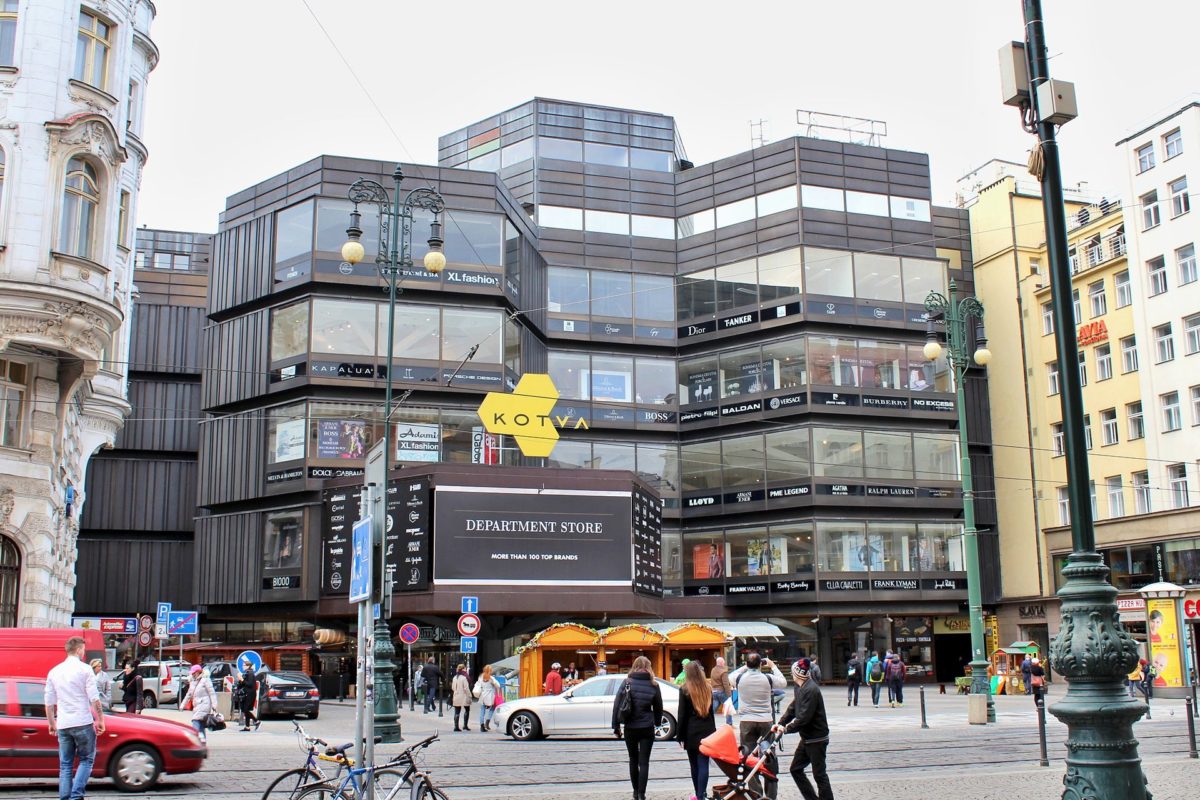
Kotva (“anchor” in Czech) is a department store located on Republic Square (Náměstí Republiky). Designed by Věra and Vladimír Machonin, it stands out amid Baroque and Art Nouveau buildings. Built between 1970 and 1975 by the Swedish company Siab, it has 5 floors and the ground plan is an original assembly of 28 hexagons. It was the largest shopping center in socialist Czechoslovakia (and the 5th largest in Europe): 22,000 m2, 2,000 employees and 75,000 daily visitors. Thought to be a symbol of abundance and prosperity, it had to endure rationing. Classified as a cultural monument in 2019, the department store went into decline in the early 90s, facing competition from new shopping centers such as Palladium, just across the street. Today, Kotva is moving in the right direction, unlike the nearby functionalist-style Bílá labut’ (“White Swan”) shopping center. Reconstruction is closely monitored to respect the original architecture. Not far away, a little past the Municipal House, an Art Nouveau jewel , you’ll find the Czech National Bank (Na Příkopě 28) in a late international style.
Kotva
Náměstí Republiky 8
The National Theatre’s New Stage
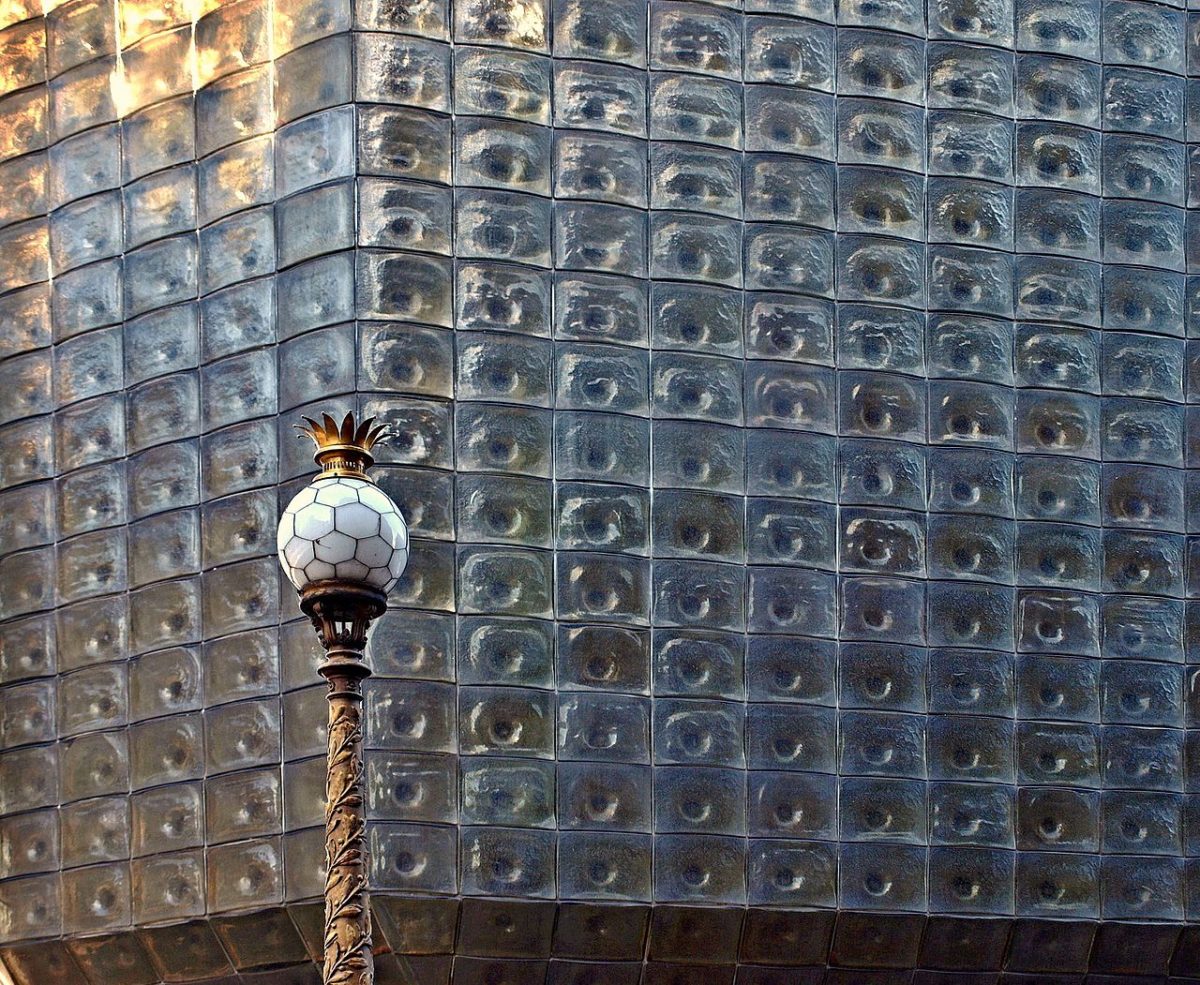
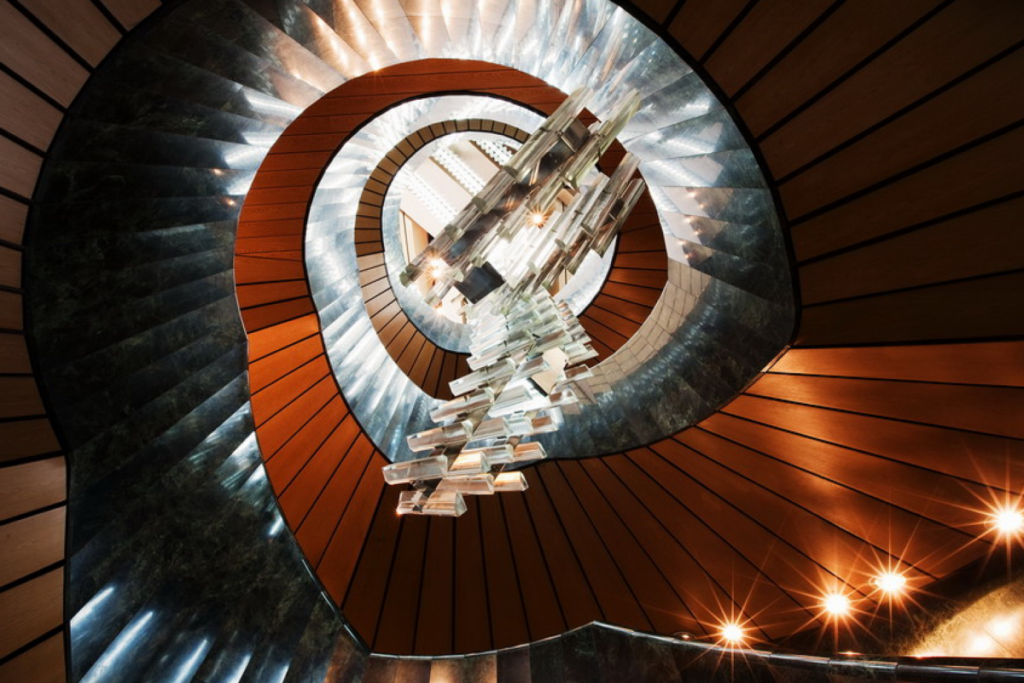
A building built once again amidst controversy and inaugurated in November 1983 to mark the centenary of the National Theater, next to which it stands. A crystal-shaped edifice that doesn’t go unnoticed with its 4,306 blocks of blown glass (suitable for semi-finished TV screens!) Blocks covered with slabs of green marble imported from Cuba (go inside, you’ll find the same materials inside). This is my favorite piece of brutalist, functionalist architecture in Prague. It was designed by architect Karel Prager (who is also the architect of the new National Museum building mentioned above). A post-modern construction begun in 1977, it contrasts sharply with the appearance of the National Theatre (late 19th-early 20th century), from which it forms the alternative stage, and from which it is separated by the small Václav Havel Square and its red heart (the former president always signed his letters like that), where small Czech design markets are occasionally held. It’s a far cry from the neo-Renaissance side of the famous Národní street, where you’ll also find two of Prague’s most illustrious cafés, Café Slavia and Café Louvre! A protected monument since 2021, the New Stage is home to :
- Laterna magika (the world’s first multimedia theater)
- the atypical Café NONA, where I like to go for its superb view of National Avenue, the site of the Velvet Revolution. Don’t miss the extraordinary staircase with its chandelier by Pavel Štursa and Pavel Hlava. The building’s interior, designed in the style of the 1970s, is just as impressive as its exterior, and features marble and crystal.)
- the National Theatre box office
Národní 4
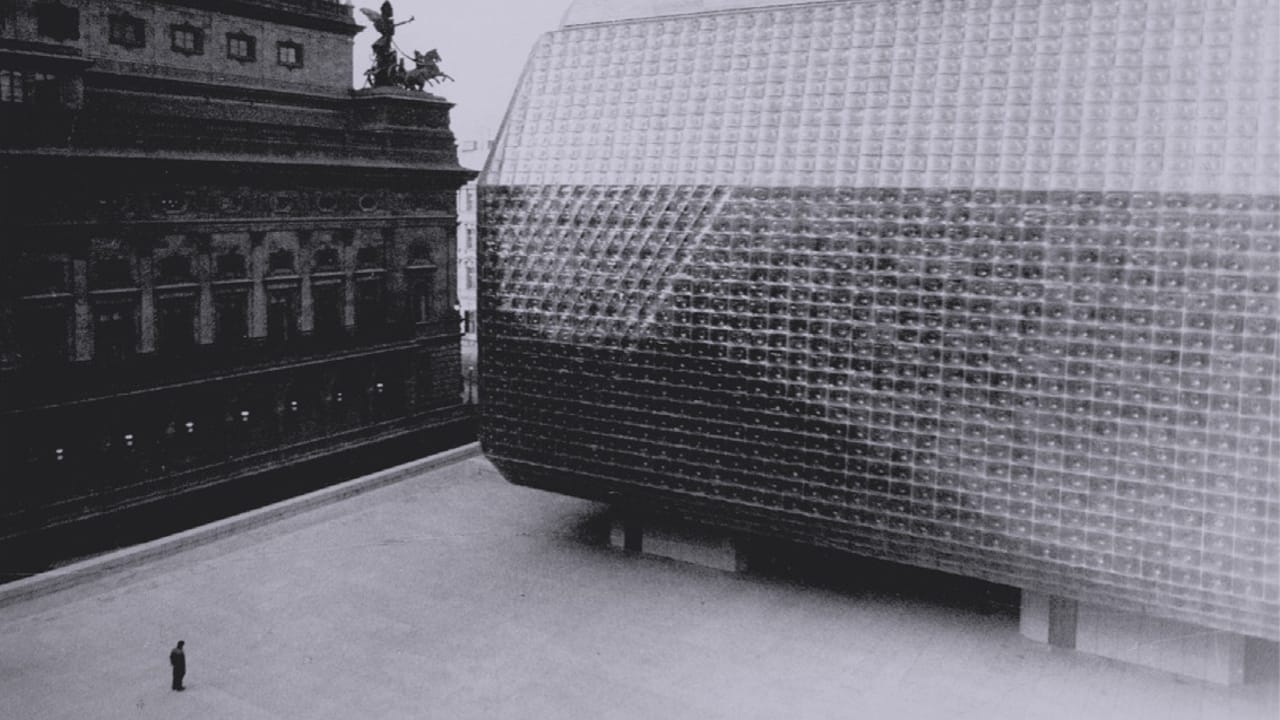
The new Main Station building
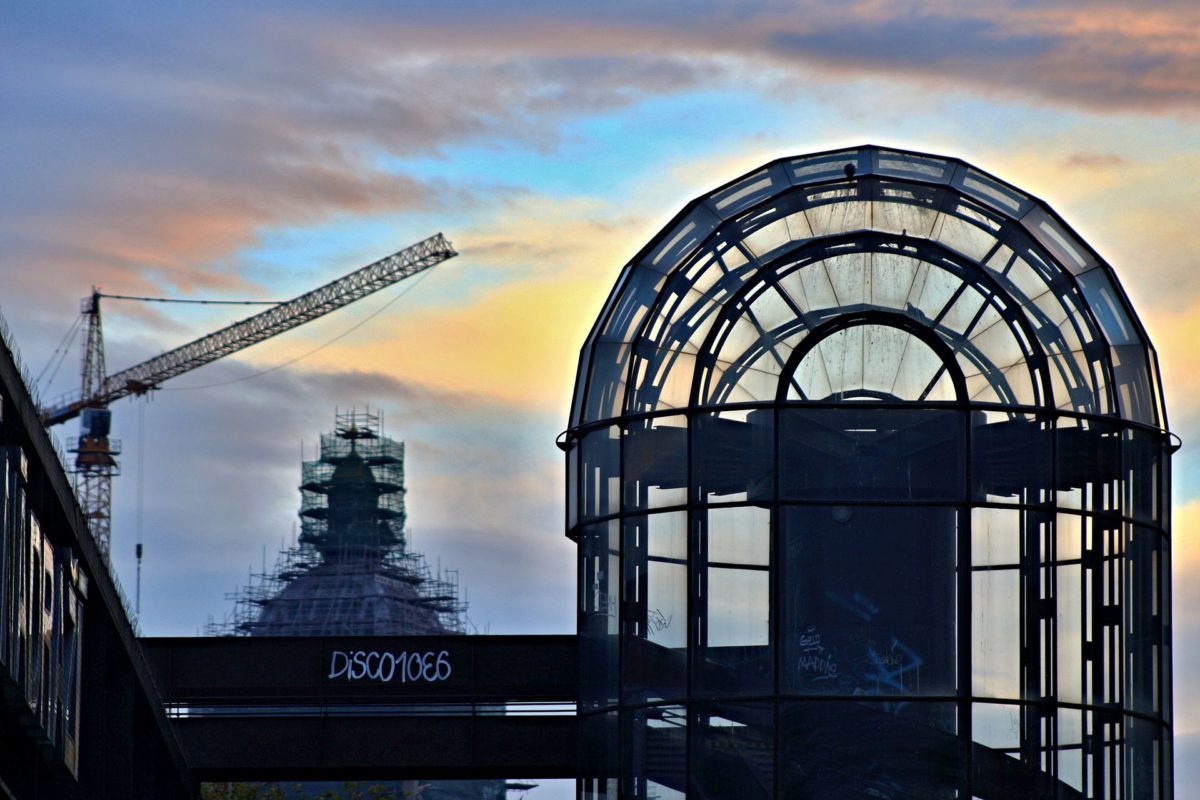
An Art Nouveau jewel , the Main Station also has a small Brutalist section (lower part accessible on foot). However, I prefer the early 20th-century cupola and its café… If, for practical reasons, you want to stay close to the station, I recommend the MeetMe23 hotel.
Other examples of Brutalist architecture
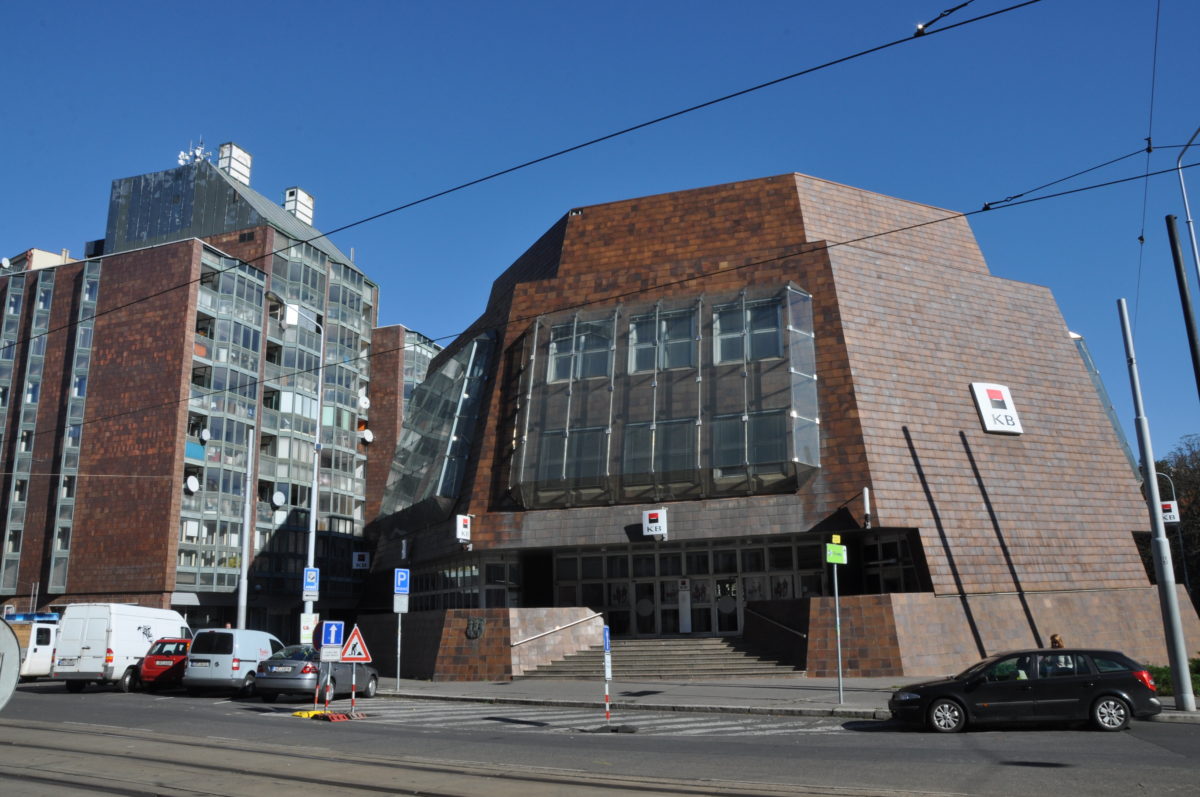
This list of Brutalist buildings in the city center is not exclusive. You’ll find other buildings at the following addresses: Vyšehradská 51(CAMP-Centre for Architecture and Metropolitan Planning, café and bookshop), Ječná 39 (Teplochny, blue office building), Václavské náměstí 21(Duplex club with its glass crown: a bar-club and restaurant where Václav Havel’s friend Mike Jagger celebrated his 60th birthday in 2003!) or the famous Strahov stadium, with the Strahov tunnel control center (1981) right next door in the shape of a carved stone.
While I’ve grown accustomed to the above-mentioned buildings (to the point of liking some of them), I have a harder time with some, such as this red-brick building in Prague 5 (pictured above). Like the National Theater annex mentioned above, it was designed by Karel Prager and was intended to house the State Bank of Czechoslovakia (Štefánikova 22). An octagonal base for a truncated pyramid and a building often considered one of Prague’s ugliest… Local residents call it the “bunker”, and it was originally intended to develop the whole district in this way…
Stay in a Brutalist hotel
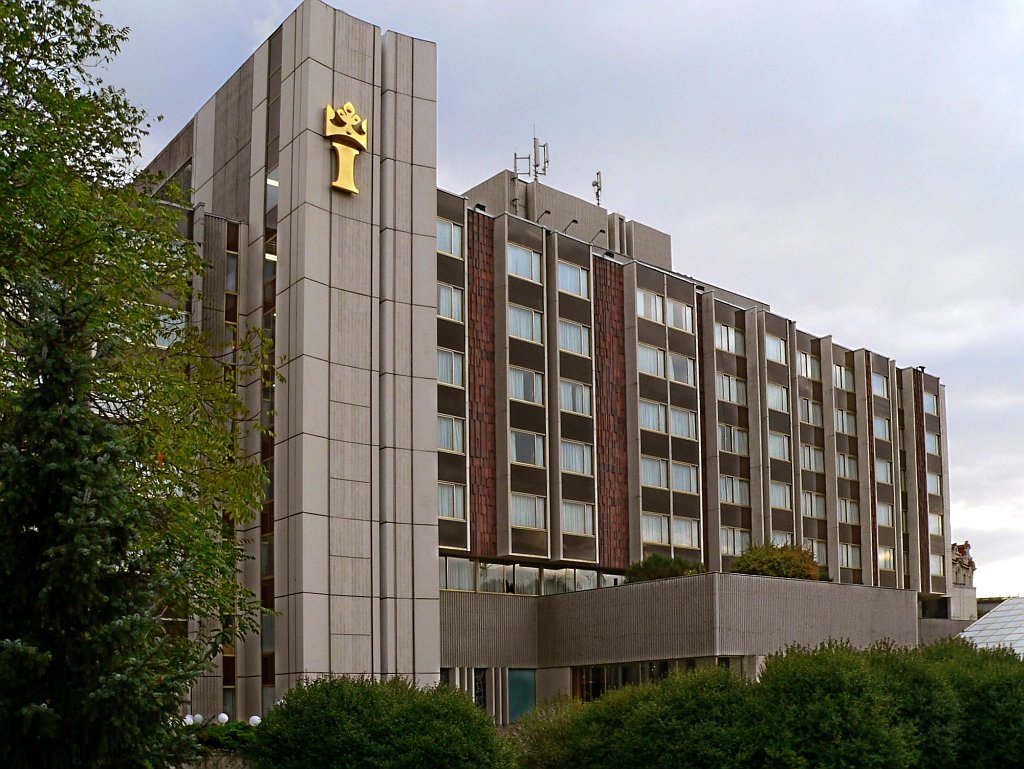
As with all the unusual hotels with a rich historical past in which you can sleep, it’s very original to sleep in a hotel with Brutalist architecture (but you can also prefer another design…) Don’t worry, you won’t be in for a rude awakening in these establishments! Prague hotels have an excellent reputation!
The gigantic Hotel Praha built in the 70s in Prague 6 was entirely devoted to the needs of the Communist regime, but was demolished amid controversy in 2014. The InterContinental Hotel (1974) has become the Fairmont Golden Prague (the square behind it has been christened Miloš Forman), but for some purists, the hotel isn’t quite brutalist enough… Just a stone’s throw from Old Town Square, it’s at the end of luxurious Pařížská Street, and you can see the hotel very well from Letná Hill. Kafka once lived here, and the Charles Bridge and Jewish Quarter are just a stone’s throw away. Still on Pařížská Street, at number 25, you’ll find another Brutalist building built in 1974 (the International Students’ Union).
It’s possible to sleep in a Brutalist hotel! My personal favorite is the Mama Shelter
Other examples of Brutalist architecture: Orea Hotel Pyramida (1987) on the airport road, in the shape of a pyramid of course. Intended to impress foreign visitors during the Communist era, it too is now considered one of Prague’s ugliest buildings, but one that’s truly atypical! I’ve already mentioned it on the blog because, in addition to its proximity to the Castle and its sauna, a little robot (a word of Czech origin) used to work there.
And let’s not forget the One Room Hotel and Žižkov’s TV tower, where you can overlook Prague from your bed, or the Mama Shelter, although it’s also sometimes described as functionalist. It was called the Parkhotel when it was built in 1967, and used to welcome foreigners on business at the nearby exhibition center (today it houses the National Gallery).
